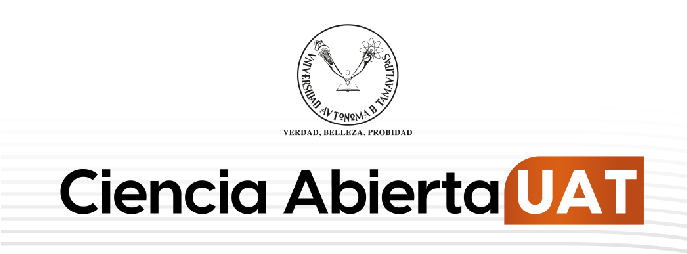Submissions
Author Guidelines
INSTRUCTIONS FOR AUTHORS
TYPES OF CONTRIBUTIONS
Scientific Article
Structure the article in the following order: Main title, Abstract (maximum 1000 characters including spaces), Keywords, Abstract, Introduction, Materials and methods, Results, Discussion, Conclusions, Acknowledgements (optional) and References.
The maximum length of the manuscript submitted will be 25 pages, including Tables and Figures. The combined sum of Tables and Figures should be in accordance with what is required to complement your article. Please limit the number of references to a maximum of 40.
Review Article
Publication of this type of manuscript is subject to consideration by the Editor-in-Chief. The topics to be discussed will be those within the scope of the journal. The article should be structured in the following order: Main title, Abstract (maximum 1000 characters including spaces), Abstract, Keywords, Introduction, Development of the topic (with the necessary sections at the discretion of the author(s), Conclusion and References.
The maximum length of the manuscript submitted will be 30 pages, including Tables and Figures. The combined sum of Tables and Figures should not exceed four. The review should contain a minimum of 30 references.
Short Communications
This type of publication is suitable for recording the results of small complete investigations or giving details of new models or hypotheses, innovative methods or techniques. The short communication will have the same sections as the scientific article: Main title, Abstract (maximum 1000 characters including spaces), Abstract, Keywords, Introduction, Materials and methods, Results, Discussion, Conclusions, Acknowledgements (optional) and References.
The maximum length of the manuscript submitted will be 8 to 12 pages, including Tables and Figures. The combined sum of Tables and Figures should not exceed four. The number of references should be limited to a maximum of 20.
Clinical Case
This type of article offers scientific observations related to the care of a case, usually involving a rare, emerging, re-emerging or atypical nosological entity. This article should be composed of the following elements: Main title, Abstract (maximum 1000 characters including spaces), Keywords, Abstract, Keywords, Introduction,
Description of the clinical case (clinical history, laboratory confirmation, treatment, etc.), Discussion, Conclusions, Acknowledgements (optional) and References.
The maximum length of the submitted manuscript will be 10 pages, including Tables and Figures. The combined sum of Tables and Figures should not exceed five. The number of references should be limited to a maximum of 20.
GUIDELINES FOR MANUSCRIPT PREPARATION
General guidelines
Format and style
Type your work in Microsoft Word (OpenOffice or WordPerfect) in Times New Roman font, 12 point size, double spaced, with the text aligned to the left. Use letter-size pages with 2.5 cm margins on all four sides and numbered consecutively. Lines of text should be numbered throughout the manuscript starting on the title page. Tables and Figures should be at the end of the document.
The text should be written in the third person and in passive voice. The numbers from zero to nine mentioned in the text should be expressed with letters, except when they are accompanied by a unit of measurement or correspond to the number of a group or treatment of the experimental design. Use units and symbols of the International System of Units.
The manuscript of your contribution should not contain the names of the authors or their institutions, since this information will be included in another text file called “author's file”.
First and second order headings
First order headings will be used to identify the main sections of the paper (e.g., Introduction, Materials and methods, Results, Discussion), these should be left aligned, capitalized, bold and without a period. Continue with the text on the next line.
Second-order headings should be used if it is necessary to identify sections within each section. These headings should be aligned to the left, written in upper and lower case, bold and without a period. Continue with the text on the next line.
Sections of the manuscript
(Consider the following information according to the type of contribution of your work)
Title (main)
The main title should be with bold text. It is suggested that it should have a maximum of 140 characters, including spaces. If necessary, include the taxonomic level to facilitate the location of the organism(s) studied.
Abstract
The abstract, preferably, should be no longer than 1000 characters. The abstract should mention the objective of the work, relevant methodology, main result(s) and conclusion.
Keywords
It should include three to five keywords in alphabetical order. They should be written in lower case, except in cases where the use of capital letters is warranted.
Introduction
The introduction should be supported by a review of current scientific literature. In this section you can provide relevant background information on the topic of study, the approach of the topic addressed, the importance or justification of the study conducted. At the end of the introduction, the objective of the work should be mentioned.
Materials and Methods
The materials and methods section should provide sufficient information to allow the work to be repeated under similar conditions. It should describe the sampling or experimental design, study site (if relevant to the work), mention the way in which the study specimens were obtained (if applicable), frequency with which samples were obtained or variables were measured, duration of the study, describe the laboratory methods used and the sources from which they were obtained or modified, statistical methods used. In the case of the aforementioned equipment, the brand, model and origin (city and country) should be specified.
It should be indicated that the animal handling procedures were carried out in accordance with national and international ethical rules and regulations in force, implementing adequate measures to minimize pain and discomfort to the animals in the study. When animals owned by individuals or clients are used in clinical trials, the informed consent of the owner should be obtained and explicitly stated in the manuscript.
Results
The results should be organized concisely, supported by tables and/or figures. The description of the results should highlight the relevant findings of the study.
Discussion
This section should contain the interpretation of the results and the objective and unbiased comparison with similar studies, supported by relevant references.
Conclusions
Annotate briefly and concisely the contributions to the field of knowledge, supported by the results obtained.
References and citations in the text
References should be written in alphabetical and chronological order. All references should be cited in the text and all in-text citations should be included in the reference section. Citations and references should follow the APA (American Psychological Association) 7th edition style.
The use of the ampersand symbol “&” instead of “and” will be respected for both references and in-text citations, except in the case of narrative citations.
- Examples of the most common types of references in APA format:
Scientific article
Last name, A. A., & Last name, B. B. (year). Title of the article. Name of Journal, volume(number), #-#. https://doi.org/xxxx
Bowles, D. B., & Fry, D. R. (2009). Nasal cryptococcosis in two dogs in New Zealand. New Zealand Veterinary Journal, 57(1), 53-57. https://doi.org/10.1080/00480169.2009.36869.
Book
Surname, A. A., & Surname, B. B. (year). Book title (2nd ed.). Publisher. DOI or URL
McVey, D. S., Kennedy, M., Chengappa, M. M., & Wilkes, R. (2022). Veterinary microbiology (4th ed.). John Wiley & Sons.
Book chapter
Surname, A. A., & Surname, B. B. (year). Chapter title. In A. A. Editor & B. B. Editor (Eds.), Title of book (2nd ed., pp. #-#). Publisher. DOI or URL
McEwen, S. A., & Collignon, P. J. (2018). Antimicrobial resistance: a one health perspective. In S. Schwarz, L. M. Cavaco & J. Shen (Eds.), Antimicrobial resistance in bacteria from livestock and companion animals (1st ed., pp. 521-547). American Society for Microbiology. https://doi.org/10.1128/9781555819804.ch25
Tables
Tables must show indispensable information for the exposition and understanding of the results or of another section that requires it. They are resources that, in cells or other spaces arranged in columns and rows, integrate data of interest for the article.
Tables should be numbered using Arabic numerals and a title describing their contents should be placed after the number. The number and title should be placed at the top of the Table (e.g., “Table 1. Table title or description.”). They should be referred to by citing them within the text, e.g., “as shown in Table 1...”; “the results obtained (Table 2)”.
Tables should be included as text, not as an image. Attributes and data should be centered within each column.
Tables should be placed at the end of the manuscript, after the References section.
Figures
Figures are considered to be graphs, illustrations, photographs, diagrams and maps.
Figures will be numbered using Arabic numerals and the description of their contents will be placed after the number. The number and legend of the description will be placed at the bottom of the Figure (e.g., “Figure 1. Title or description of the Figure”). Figures should be cited in the text, e.g., “as shown in Figure 1...”; “the results obtained (Figure 2)”.
Figures should be placed at the end of the manuscript, after the References section and after the Tables, if the manuscript also includes them.
MANUSCRIPT SUBMISSION
Submission of a manuscript to Ciencias Veterinarias y Producción Animal (CVPA) implies that the work has not been previously published, that it is not being considered for publication in another journal, and that the work has been approved by all authors and by the institution where it was submitted.
Manuscript submission is done through the journal's web platform (https://cienciasveterinariasyproduccionanimal.uat.edu.mx) for which you must register and log in beforehand to be able to submit items online and check the status of recent submissions.
Elements submitted online
- Cover letter and statements about the manuscript
Letter addressed to the Editor-in-Chief of CVPA to introduce the work you wish to publish in the journal. The letter should include the following information:
- Title of your paper.
- Type of contribution to which it corresponds (Scientific Article, Review Article, Short Communications, Clinical Case).
- Names of the authors of the paper
You are requested to confirm some aspects about your manuscript by adding the following text to the letter: “On behalf of all authors I confirm that the work has not been previously published, nor is it being considered for publication in another journal; I also confirm that the work has been approved by all authors and by the institution where it was done. In addition, I confirm that the manuscript does not include figures protected by copyright or, if they are, we have permission to publish them.”
The letter must be signed by the author for correspondence.
- Authorship sheet (authors' data and authorship statement)
The author's file will be an additional text file to the manuscript file that will include the title of the paper and information about the authors.
The full names of the authors should be listed beginning with the surname(s) and then the first name(s) of the author(s). Separate the different authors with a comma. A numerical superscript should be added at the end of each author's name as an identifier of his/her institution of affiliation.
Write the name of each institution, including city, state/province and country.
Indicate the author for correspondence and add his/her e-mail address.
The author's contribution to the manuscript being submitted to the journal (e.g., contribution to the conception or design of the paper, acquisition, analysis or interpretation of data for the paper, drafting or critical revision of the manuscript, among other contributions) should also be indicated in the author's record.
Once the article has been submitted, no changes in the authors will be allowed, unless it is due to an extraordinary situation (the criteria of the Committee on Publication Ethics: COPE).
- Manuscript
The manuscript of your paper should be sent in a word processor file that includes the Tables and Figures at the end of the document. The manuscript should not include the names of the authors or their institutions of affiliation, since this information will be provided in another text file called “author's file”.
MANUSCRIPT REVIEW AND ACCEPTANCE PROCESS
Editorial and peer review
If the manuscript does not comply with the format established in the Instructions for Authors, for example, with respect to the sections to be included according to the Type of contribution to which it corresponds or with respect to the format of citations and/or references, the manuscript will be returned to the author so that he/she can make the pertinent modifications before it is sent for peer review.
However, if the subject matter of the paper does not correspond to the focus of the journal, the manuscript will be rejected for that reason. Additionally, if the content of the manuscript presents a high percentage of coincidence with previously published works, it will also be rejected.
If the manuscript meets the specifications of format, originality, and is in accordance with the focus of the journal then the peer review process will be initiated. Double-blind review will be used.
The corresponding author will be notified of the decision made by the journal's Editorial Committee regarding the manuscript (Accepted for publication, Publishable with modifications, Resubmit for review, Resubmit to another publication, Not publishable).
Accepted manuscripts
Manuscripts accepted for publication in the journal will be those that receive a positive opinion after the peer review process. From that moment on, they will move on to the galley proof production stage.
Authors will be asked to send the original files of each figure in jpg, png or eps format, with at least 300 dpi (dots per inch). In addition, they should send two good quality images of their own, related to the subject of their work, to illustrate the first page of the article.
Copyright Notice
The authors will provide in writing to the journal Ciencias Veterinarias y Producción Animal the ownership of the copyright, which allows their article and materials to be reproduced, published, edited, published, posted, communicated and transmitted publicly in any form or medium, as well as their distribution in the number of copies required and their public communication, in each of its modalities, including making them available to the public through electronic, optical or any other technology, exclusively for scientific, cultural, dissemination and non-profit purposes.
Privacy Statement
The names and email addresses entered in this journal site will be used exclusively for the stated purposes of this journal and will not be made available for any other purpose or to any other party.







